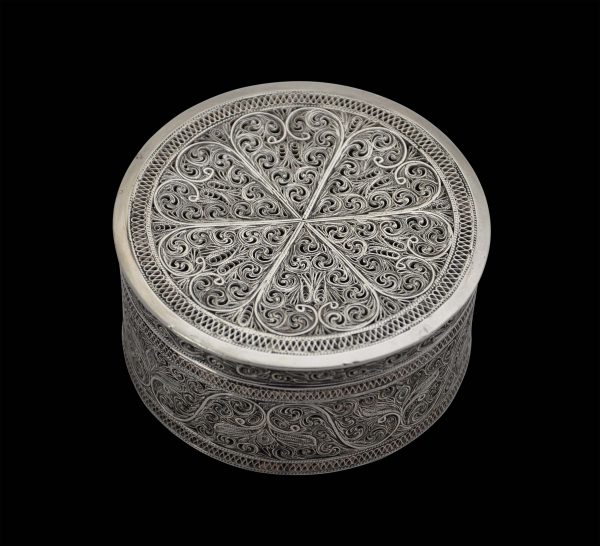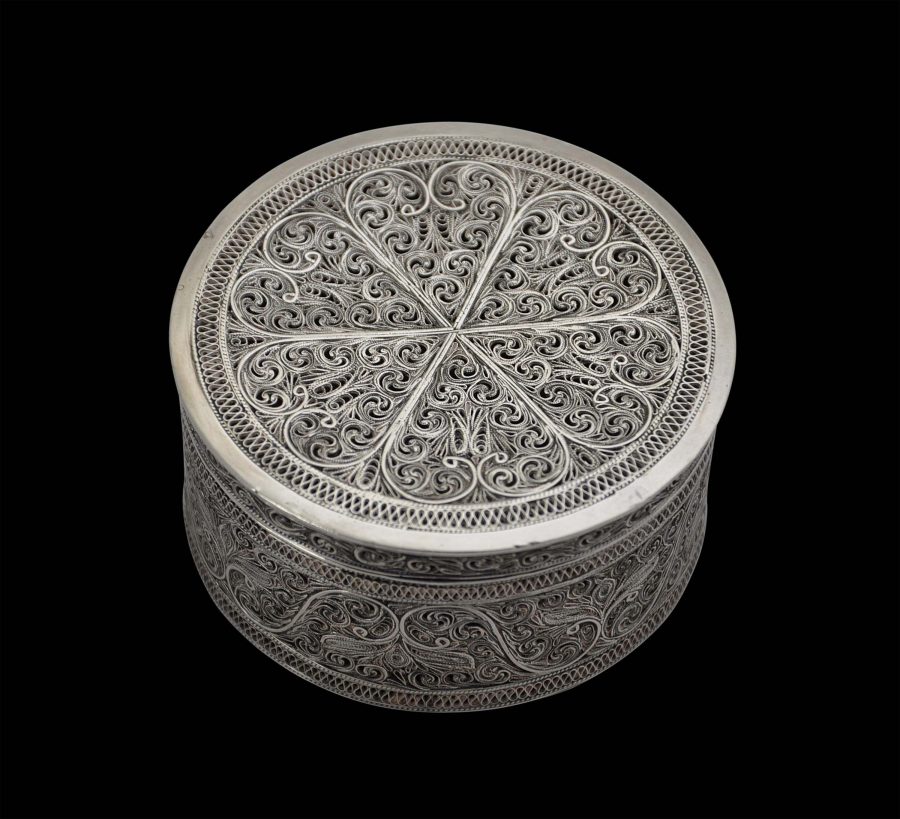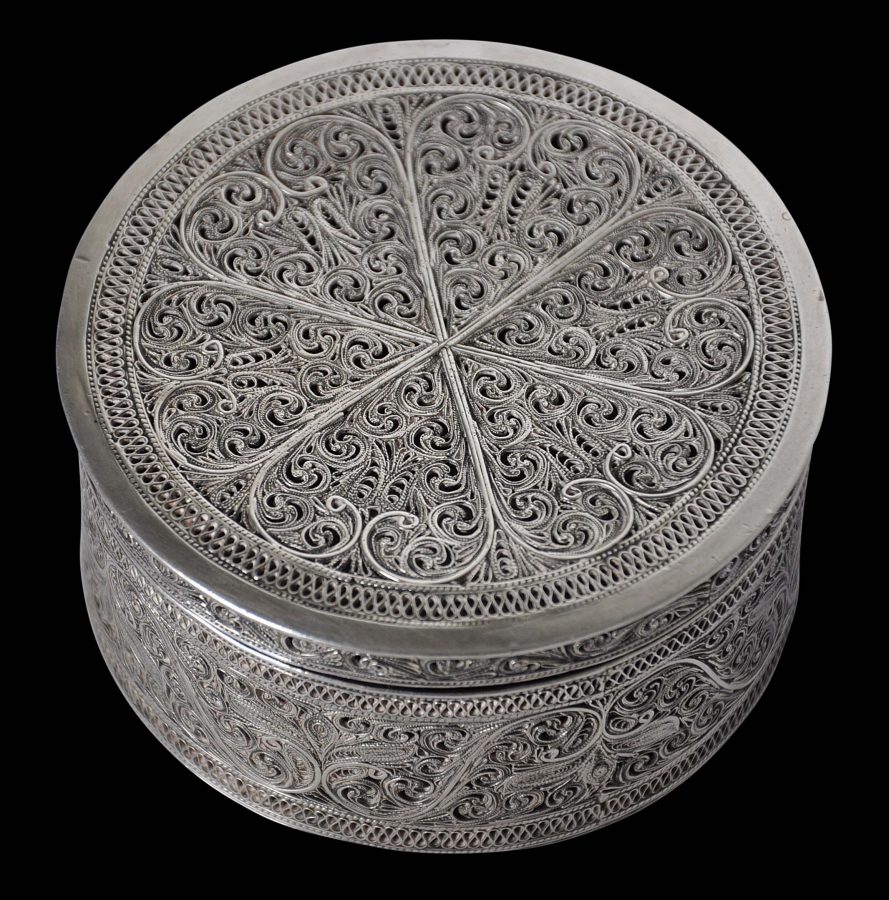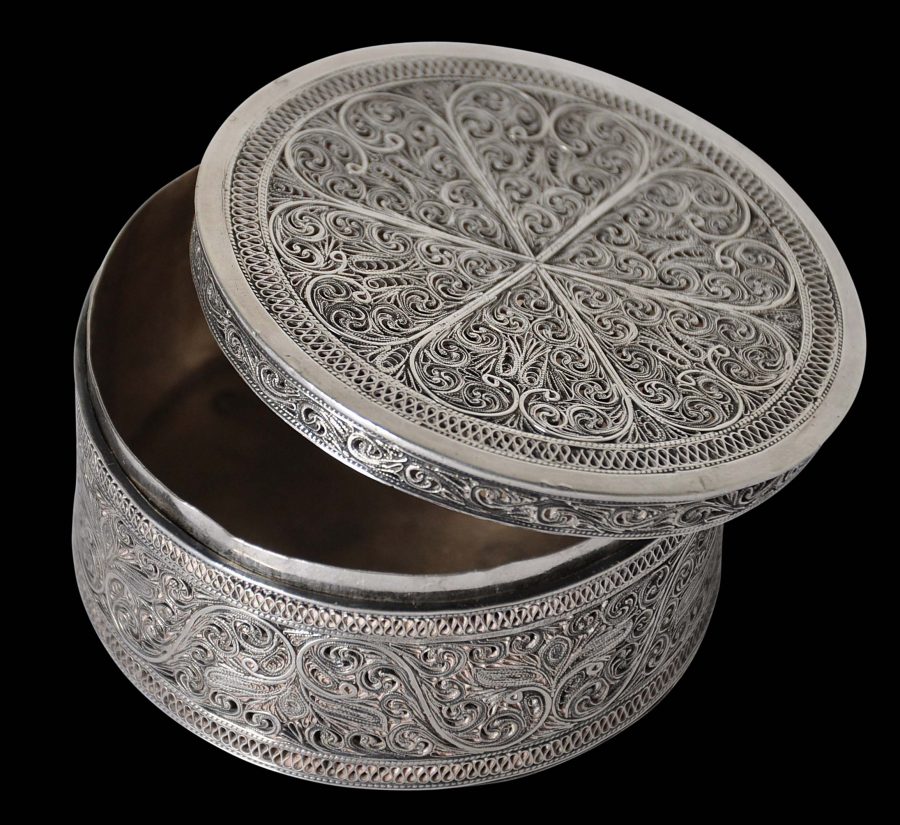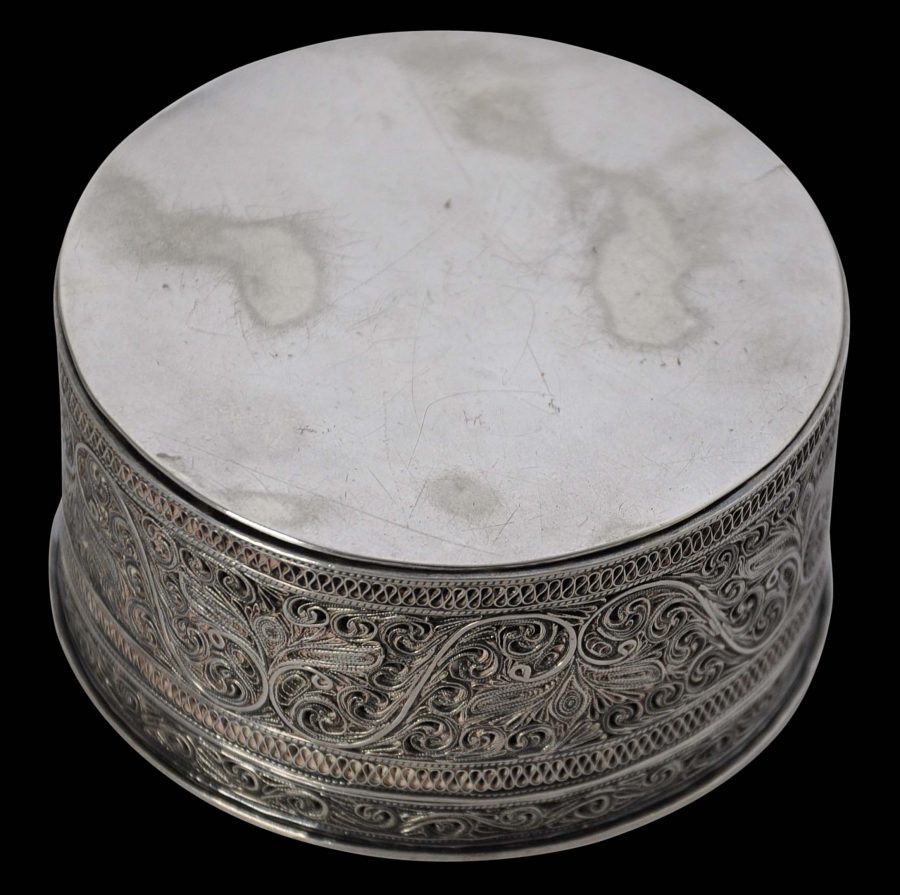This round box and cover is of wide flattened bands of silver wire in-filled with fine twisted silver wire work. The cover is of filigree alone; the base features a removable silver filigree sleeve over hammered silver sheet. The bottom is of unadorned hammer silver sheet alone.
The combination of wide, flattened wire components with fine twisted filigree work is found on articles often ascribed to Goa of the second half of the seventeenth century – see Menshikova, 2006, p. 43 for two examples, and p. 67, p. 81 and p. 88 for three others which also have similar filigree ball feet as the salver here. The author also refers to filigree items of this type as having been made by ‘Chinese masters in India or Southeast Asia’ in the seventeenth century, which leaves open the possibility that such items might have been made in Batavia perhaps, and most probably traded by the Dutch East India Company (VOC). Two caskets that also show the flattened and fine filigree wire mix and which have filigree ball feet are illustrated in Museo de Sao Roque (2006, p. 212 and p. 214). Both are attributed simply to India. Karimnagar is another possible place of manufacture where the style of filigree work is not unlike that attributed to Goa. We prefer a dating of 18th or early 19th century for this box.
The box here might have been part of a lady’s toilet set for use atop a dresser. Perhaps it is not unlike several examples at Burghley House in Lincolnshire, see here for those.
This box is in excellent condition: there are no repairs, splits, dents or losses to the filigree.
References
Jordan, A. et al, The Heritage of Rauluchantim, Museu de Sao Roque, 1996.
Piotrovsky, M. et al, Silver: Wonders from the East – Filigree of the Tsars, Lund Humphries/Hermitage Amsterdam, 2006.


